Article sections
OpenVPN is an open source software that implements virtual private network (VPN) techniques for secure site-to-site and remote access. OpenVPN is capable of traversing network address translators (NATs) and firewalls since it uses a custom security protocol that utilizes SSL/TLS for key exchanges.
OpenVPN allows peers to authenticate each other using a pre-shared secret key, certificates, or username/password. With a Certificate Authority (CA) to sign the certificate, it allows the server to use a different certificate for each client in a multiclient-server topology.
In this article, we will use XCA, a free Certificate Authority (CA) software, to generate and manage the server and client certificate that required for OpenVPN configuration. This article includes:
-
Open VPN
Part 1. Making Server Certificate on the Router
1-1. Since the certificate has a valid period, please make sure the time settings of the router is correct at System Maintenance >> Time and Date.

1-2. Go to Certificate Management >> Local Certificate to generate a new certificate. Type the information, then click Generate.

1-3. After clicking Generate, you will see the Certificate Signing Request, which needs to be signed by a CA. Copy the certificate at PEM Format Content.
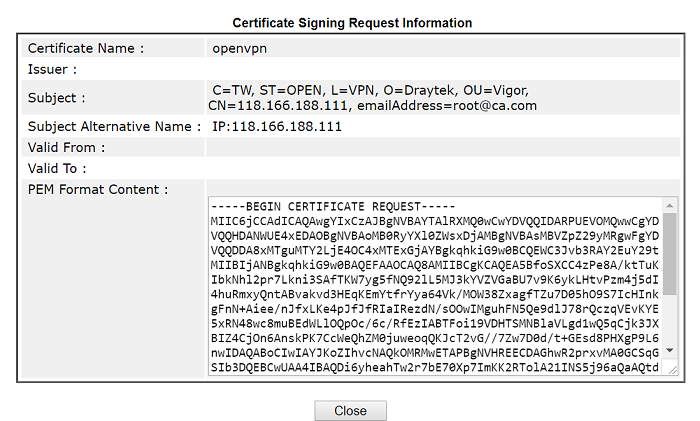
Part 2. Create a new CA on XCA
2-1. Launch XCA, go to the Certificates tab, click New Certificate. Select Create a self-signed Certificate with the serial. Click Apply all to apply the CA Template.

2-2. Go the Subject page,
- type distinguishable information for the certificate, then click Generate a new key.
- Select « RSA » for Keytype and « 2048 bit » for Keysize, then click Create.
- Click OK to generate the CA Certificate. Now we have the Trusted CA Certificate to sign the server certificate and client certificate.
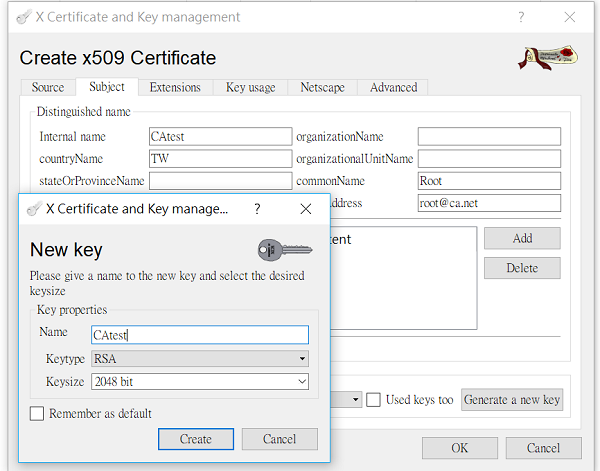
Part 3. Importing Signed Server Certificate and CA Certificate to the Router
3-1 Go to Certificate signing requests, select Paste PEM data and paste the PEM Format Content copied from the router in step 1-3.
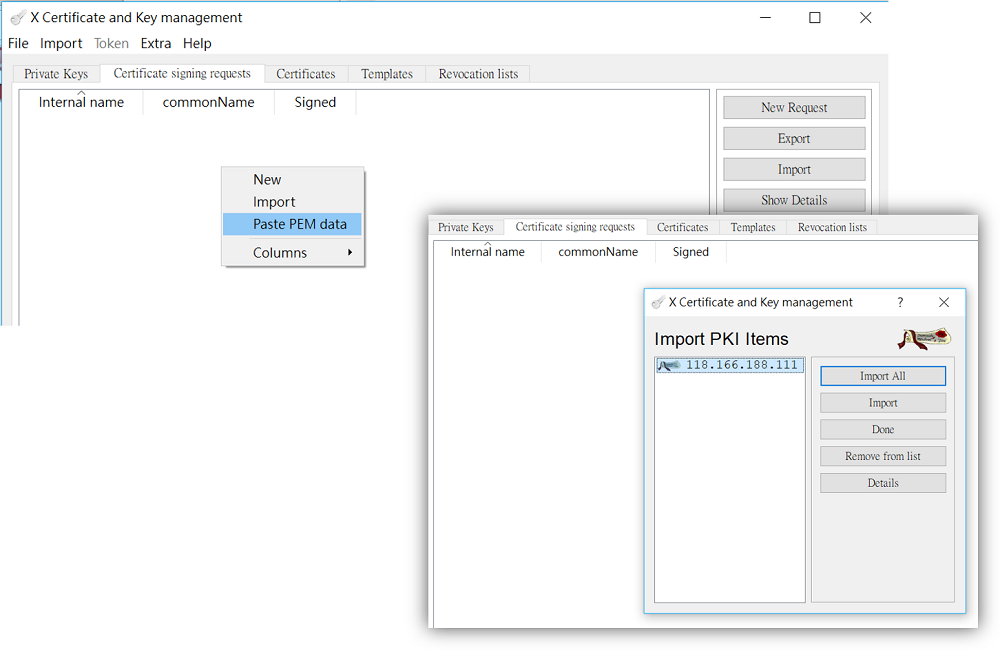
3-2. Right-click on the imported certificate and select Sign. Use the certificate created in step 2 to signing.
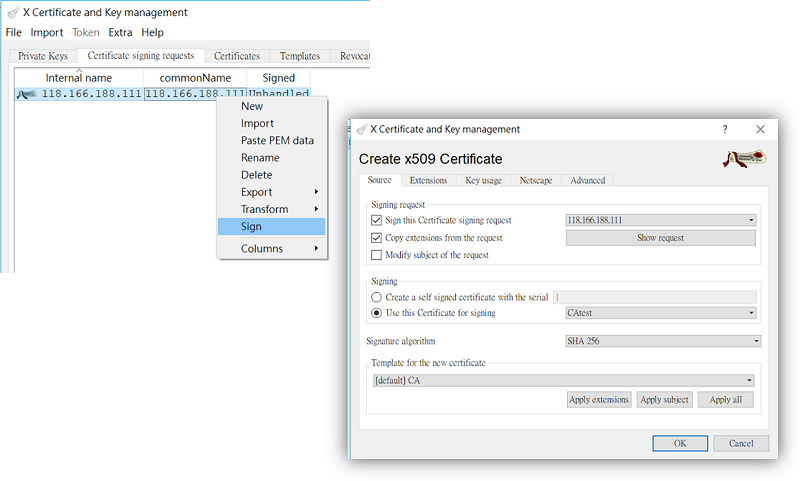
3-3 Export the Singed Local Certificate in .crt format. Go back to the router’s GUI, import it to the router at Certificate Management >> Local Certificate >> Upload Local Certificate.
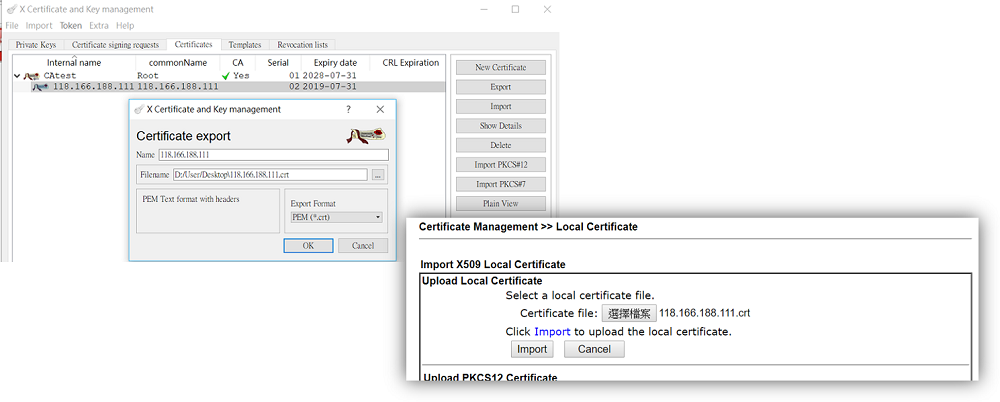
3-4 Make sure the status of the certificate uploaded is OK.
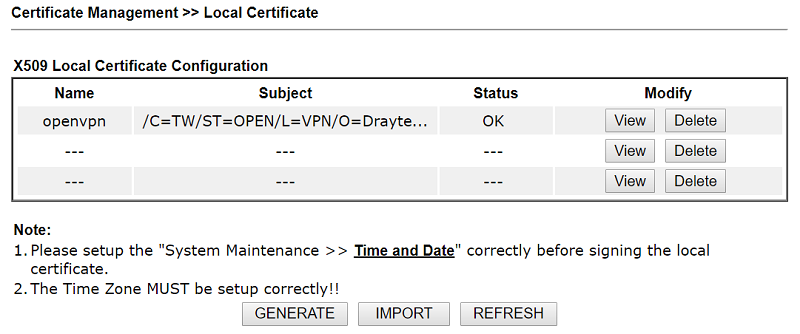
3-5 On XCA, go to Certificate, choose the CA certificate and export it in .crt format, and import it to the router at Certificate Management >> Trusted CA Certificate.

3-6 Make sure the status of the Trusted CA imported is OK.
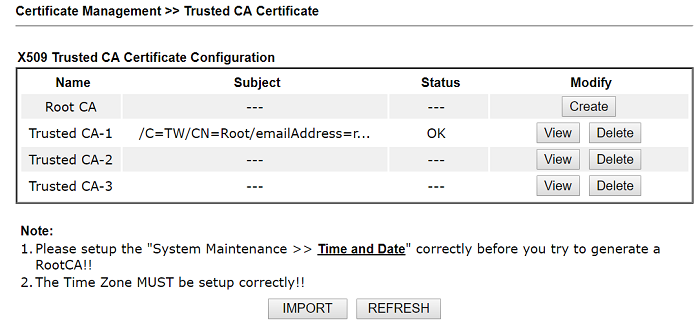
Part 4. Making a Private Certificate and Private key for the VPN Client
4-1 On XCA, go to Certificates, click New Certificate. At Signing, select use the CA certificate for singing.
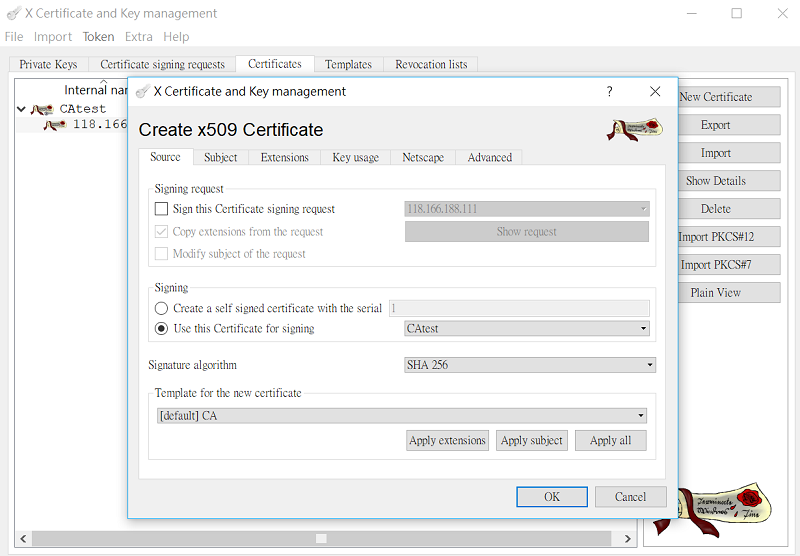
4-2 Go to the Subject page,
- enter distinguishable information for the certificate,
- click Generate a new key, choose « RSA » for Keytype and « 2048 bit » for Keysize. Then click Create.
- Click OK to generate the certificate. Now, we have the private certificate for the VPN client as well.

4-3. Go to Certificates, select the certificate we just created. Export it in .crt format and import to the VPN client.
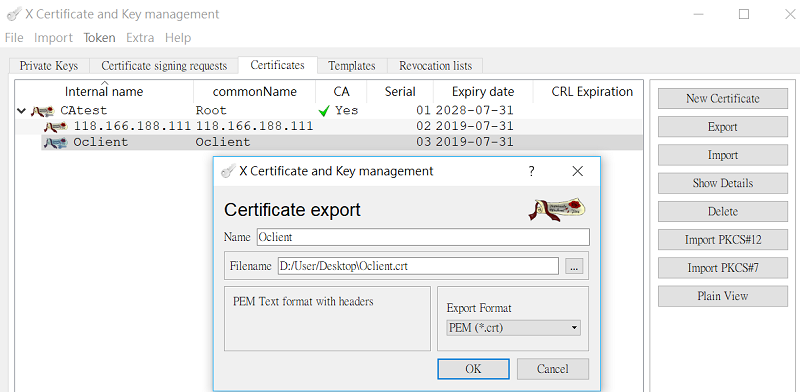
4-4. Go to Private Keys, export the Private Key (Oclient.key), manually change extension name to .key. Then, import it to the VPN client.

Part 5. Router Setup as OpenVPN Server
5-1. Go to VPN and Remote Access >> OpenVPN General Setup, and have the configuration below.

5-2. Go to the Client Config tab, specify the file name of CA Certificate, Client Certificate, and Client Key. Then, click Export.

5-3. Go to VPN and Remote Access >> Remote Dial-in User to create user profiles for OpenVPN Dial-in users. Check Enable this account, enter Username/Password, and check OpenVPN Tunnel in Allowed Dial-In Type.

5-4. Go to SSL VPN >> General Setup to specify the Server Certificate, here we choose “openvpn,” which is the Local Certificate generated in part 2.

Part 6: Client Setup in OpenVPN GUI
6-1 Import the OpenVPN config (test.ovpn) in OpenVPN GUI. There are three files to put in the OpenVPN config folder:
- Trusted CA Certificate (CAtest.crt)
- Private Certificate (Oclient.crt)
- Private Key (Oclient.key)

6-2 Click Connect and enter username/password configured in step 5-3.

After establishing the OpenVPN tunnels, the VPN status will show in VPN and Remote Access >> Connection Management
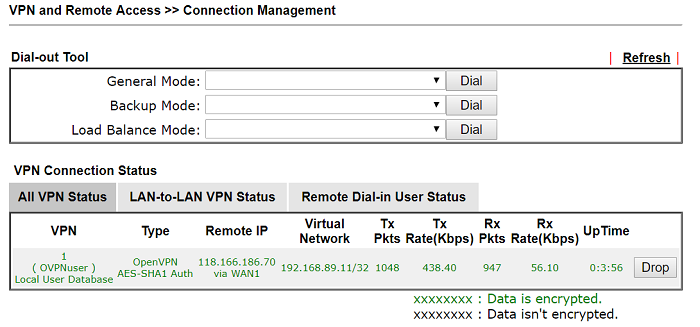
Related Articles
- IPsec Xauth depuis iOS vers un routeur Vigor
- Comment configurer une authentification d'un client VPN Dial-In distant par un serveur RADIUS?
- VPN IKEv2 à partir de macOS vers un routeur Vigor
- VPN SSL depuis Windows vers un routeur Vigor
- L2TP over IPsec depuis iOS vers un routeur Vigor
- VPN PPTP depuis le client Windows Smart VPN vers un routeur Vigor
- Utiliser VPN IKEv2 d'Android vers un routeur Vigor
- Qu’est-ce que VPN Matcher et comment l’utiliser ?
